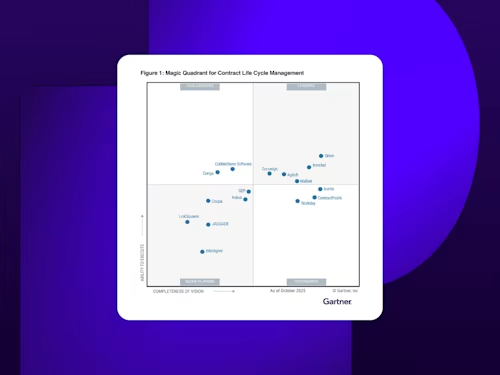
Reducing Friction in Electronic Funds Transfers with Real-time Data Verification
Learn how Docusign IAM supports compliance with the latest EFT regulations through data verification.

Facilitating the transfer of funds—particularly across financial institutions—is one of the most critical functions of a financial institution. Increasingly, such transactions occur digitally through electronic funds transfer (EFT), including ACH payments and wire transfers.
The ACH Network, governed by Nacha, securely handled 31.5 billion electronic payments totaling $80.1 trillion in 2023. This represented an increase of 4.8% in payment volume and also marked the 11th consecutive year in which ACH Network value increased by more than $1 trillion year over year.
Unfortunately, this increase in volume has been accompanied by a high risk of fraud. ACH credit fraud volume was up 6% between 2021 and 2023, and research by JP Morgan indicates that 65% of financial institution respondents were victims of actual or attempted payment fraud.
Regulatory burden grows
Considering the risks of funds transfer fraud, it’s no surprise that regulatory scrutiny is also increasing.
A new Nacha rule aimed at credit-push payments will impose additional responsibilities on both Originating Depository Financial Institutions (ODFIs) and Receiving Depository Financial Institutions (RDFIs) to monitor and detect potential fraud. Part of the rule specifies that by 2026, originators will have to demonstrate they have “risk-based processes and procedures reasonably intended to identify ACH entries initiated due to fraud.”
This new rule is just the latest in a slew of regulations aimed at mitigating EFT fraud. These include Regulation E, which requires financial institutions to provide consumers with complete and accurate transaction records, preserve detailed audit trails of these transactions for broader regulatory purposes, and promptly investigate and correct errors.
Nacha also introduced the WEB Debit Account Validation Rule in 2021, which requires originators of ACH transactions initiated online, via a mobile app, or over a wireless network to implement “a commercially reasonable transaction detection system” to determine that the account number to be used is valid.
Operational challenges persist
Given the financial value, fraud risk, and compliance considerations at stake, it’s no surprise that virtually all financial institutions have rigorous processes for verifying data—particularly bank account information—submitted by customers as part of an EFT.
However, existing processes typically require time and resources from employees to manually check bank account information after ACH authorizations or wire transfer forms have been completed and signed by customers. Moreover, if errors are uncovered during these checks, customers must redo NIGO (not in good order) forms, resulting in frustration and delayed processing times.
As EFT volume grows, it’s clear that financial institutions need a more scalable approach to verifying bank account information and other data to reduce fraud, decrease NIGO rates, and meet evolving compliance standards.
Docusign offers a comprehensive solution
Intelligent Agreement Management (IAM) is AI-powered cloud software that helps streamline and automate agreement processes. Fortunately, with Docusign IAM, financial institutions can tap into a suite of capabilities and platform services to reduce NIGO rates and mitigate fraud risk while providing customers and members an outstanding experience.
Identity Verification: First, the customer or member initiating the funds transfer verifies their identity through the Docusign Identify suite of verification options. Depending on the institution’s risk parameters, they can elect to verify or authenticate customers using knowledge-based authentication, SMS or phone authentication, or electronic verification of government ID, the latter of which can be paired with liveness detection to achieve the highest level of identity assurance.
Data Verification: Next, the initiating customer or member populates the document template with the requested data. Through Data Verification, a powerful new platform service that improves information collection in agreements sent with eSignature, data such as address, bank account number, routing number, and bank owner is verified in real time against trusted data sources. If any entered data is deemed invalid, the initiating party is allowed to correct the information before signing.
eSignature: Once all the entered information is validated, the customer or member can electronically sign the form (such as an ACH authorization or wire transfer form).
Advanced Workflows: For transfers exceeding a defined threshold, the form can be conditionally routed to a designated group for authorized review and approval.
Audit trail: With Docusign IAM, every step of the transaction—including ID Verification, Data Verification and eSignature—is recorded and stored in a detailed audit trail and Certificate of Completion for compliance purposes.
Through Data Verification, institutions can move beyond simply ensuring all data is entered and formatted correctly prior to signature. This platform service enables banks and credit unions to verify in real time whether critical information like bank routing numbers and account numbers exist and ensure they correspond to the signer in question. Real-time verification eliminates the need to manually verify this data post-signature, reduces NIGO risk, and saves customers potential headaches from rework. Evidence of this verification, including all failed and successful attempts, is captured as part of the digital audit trail.
By combining ID Verification and Data Verification, institutions can mitigate the risk of fraudulent and unauthorized electronic fund transfers. ID Verification ensures that the signer or fund originator is who they say they are, while Data Verification confirms that the originator in question is the account owner for the specified account.
With Docusign IAM, financial services and insurance organizations are well-positioned to reduce NIGO forms, mitigate fraud, and deliver superior customer experiences.
Register for our upcoming webinar to learn how Docusign IAM supports compliance with the latest EFT regulations through Data Verification. Then check out our latest blog, “Improve Agreement Speed and Quality with Real-Time Data Verification,” for a deeper dive into our newest platform service.
Related posts
Docusign IAM is the agreement platform your business needs



